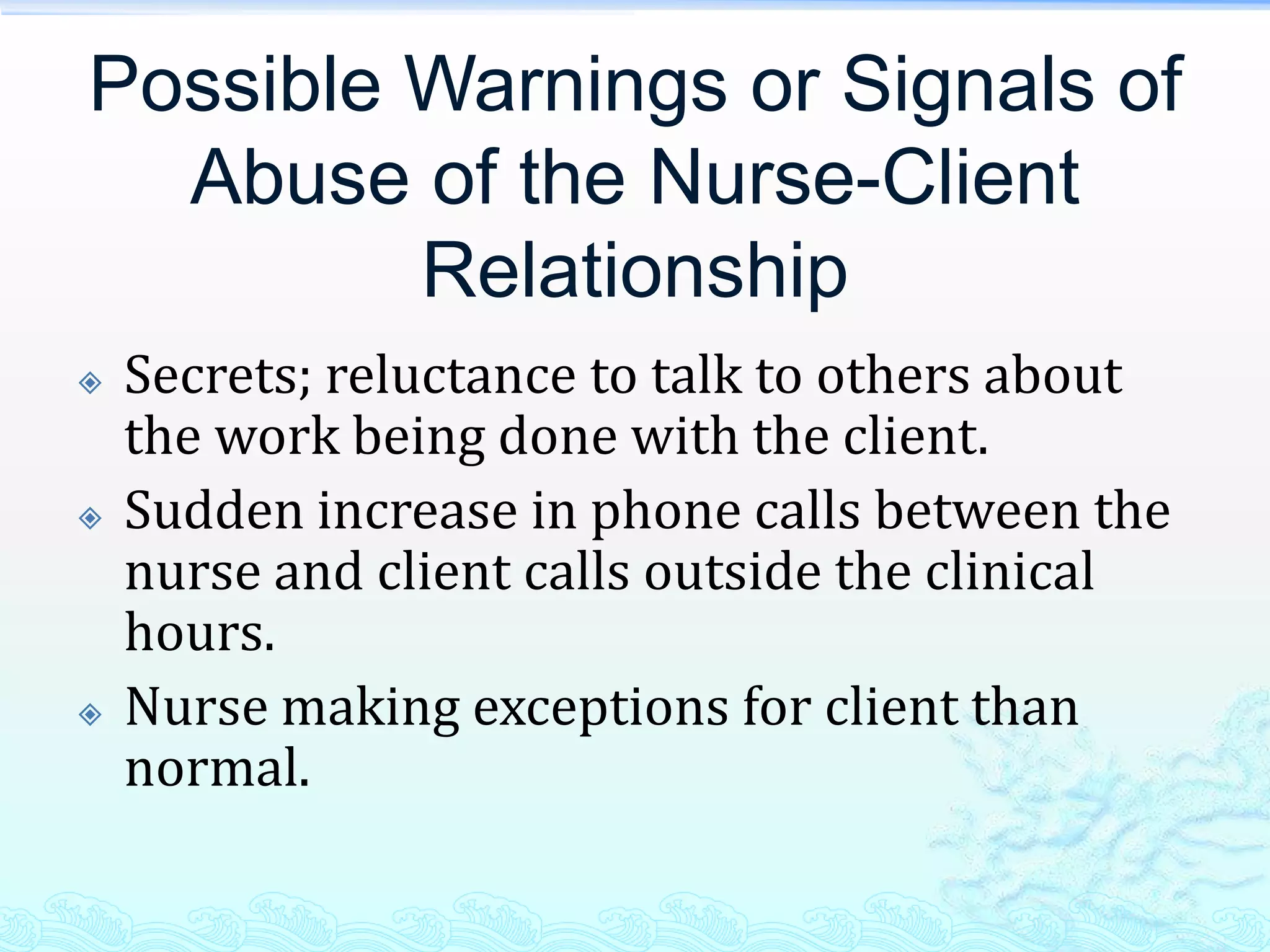The document discusses building nurse-client relationships and therapeutic communication. It outlines three types of relationships - social, intimate, and therapeutic. A therapeutic relationship focuses solely on the client's needs and involves trust, empathy, acceptance, and positive regard. Effective communication requires active listening, respecting boundaries, and avoiding inappropriate self-disclosure or touching. The relationship progresses through orientation, working, and termination phases. Therapeutic communication aims to understand the client's perspective and facilitate expression of emotions.





















































